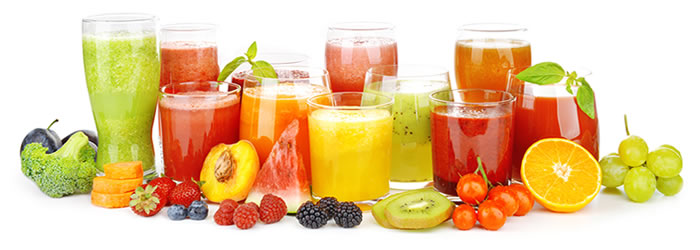People are thinking more health conscious as of late, which has given credence to many entrepreneurs to open their own smoothie shop / juice bars. Though these operations are relatively humble compared to, let’s say, an extensive banquet facility, they still have to adhere to the same health and sanitation ordinances, and have the same principle interests at hand. Let’s take a look at the necessary equipment needed to start one of these operations, and then a few things to look at while shopping that will make the checkout process go “smooth”.

Necessary Equipment
Though smoothie stands and juice bars seem relatively simple at first glance, there are a number of working parts necessary to make these operations function properly.
- Refrigeration – Juice bars and smoothie stands house a significant amount of products that are perishable, and refrigerated and frozen storage areas are absolutely necessary. Though a walk-in will not be necessary in smaller operations (they will be in some), there must be both FOH and BOH areas to keep perishable products at the proper temperatures.
- Blenders – Blenders are the most important piece of equipment in a smoothie shop. Their role in a smoothie shop is comparable to the role of the oven in a pizza shop, and without one a smoothie shop wouldn’t exist. Most smoothie shops opt for blenders with sound enclosures since they tend to have more than one operating at a time (which can create a lot of noise).
- Juicers – Juicers, citrus or otherwise, and necessary in both juice bars and smoothie shops. They are the heart and soul of a juice bar, and many smoothie shops purchase them to not only offer juices to customers, but to add fresh juice to their smoothies rather than pre-made juice.
- Ice Machine – Most, if not all, smoothies require a bit of ice, and any business that requires ice (especially when it is a key ingredient in their product) should have an ice machine in-house.
- Sinks / Dishwashing – Even if your smoothie stand or juice bar serves its final product in disposable cups, a dishwasher and dish area will still be necessary to wash prep utensils, and for end of the day cleaning. Additionally, prep sinks (for rinsing food products) and hand sinks will be needed, and for actual juice bars, bar sinks (and even potentially ice bins) may be needed.
- Prep Equipment – For quality control and food cost purposes, most smoothie stands and juice bars prep and portion fruits and vegetables in advance. For this, standard fruit and vegetable prep tools will be necessary. Cutlery, cutting boards, peelers, portion scales, and measuring cups / spoons will probably be necessary in your operation.
- Storage & Point Of Sale Equipment – Smoothie stands and juice bars often have add-in’s such as whey protein or energy shots that require dry storage areas. This dry storage is also typically used to house paper goods, disposable cups, and other point of sale accessories.
Tips For Shopping
Smoothie stands and juice bars come in all shapes and sizes, so what works for a small mall kiosk or a food truck may not necessarily work for actual juice bars. Here are a few things to look at while making purchases.
- Refrigeration & Ice Machines – When shopping for refrigeration, take into account the size of your business first and foremost. Larger operations may need a small walk-in to house fresh produce; others may just need a reach-in cooler in the BOH. Smoothie stands and juice bars that make juice in the FOH should get an undercounter, a reach-in, or even a refrigerated prep cooler for portioned fruits and vegetables. An undercounter ice machine is usually sufficient for most operations, but it is best to examine your business’s particular ice needs when picking the right one.
- Blenders & Juicers – Since juicers and blenders are the hardest working pieces of equipment in smoothie stands and juice bars, these pieces are of utmost importance. High horsepower units are the norm, as they tend to hold up better and can easily cut through some of the occasionally hard to crush items put in smoothies such as ice or frozen berries. Some additional add-on’s that are useful in this setting are: sound enclosures (as previously discussed), automatic shut-off’s, additional containers / blade sets, container rinse stations, and blenders with built-in ice dispensers.
- Sinks & Dishwashers – Sinks are needed in both BOH and FOH. Be sure to have both a hand sink and a prep sink near your smoothie / juicing station, as well as one near your prep area; fruits are sticky and this is the best way to lessen the chance of fruit flies. Most smoothie stands can make do with a humble dish area, however, and an undercounter dishwasher is recommended.
- Prep Equipment – The amount of necessary prep equipment will depend heavily on the amount for prep being done at peak periods. For example, if at one time your business has three prep cooks readying fruits for a shift, it will be necessary to have prep tools for each of them to maximize productivity. Make sure your BOH has enough knives, portion scales, cutting boards, and any other necessary tools that would hinder productivity if they had to be shared.

